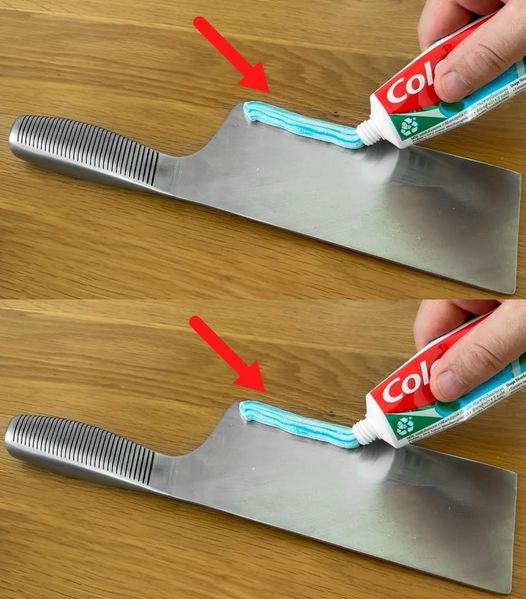ADVERTISEMENT
Applying a Little Toothpaste to the Kitchen Knife: The Butcher’s Trick You Need to Know!
If you’ve ever used a kitchen knife that’s starting to lose its edge, you know how frustrating it can be. A dull knife makes chopping, slicing, and dicing not only difficult but dangerous, as you’re more likely to slip and cause an accident. While most people rely on sharpening stones or professional services to restore their knife’s sharpness, there’s a surprisingly simple trick that many butchers swear by to keep their knives in top shape: toothpaste.
Yes, you read that right! A small amount of toothpaste can work wonders in maintaining your kitchen knives. Intrigued? Let’s dive into how this little-known butcher’s trick works and how you can use it to sharpen and polish your knives at home.
Why Toothpaste Works on Knives
The key to this trick is the mild abrasive properties of toothpaste. While toothpaste is designed to gently clean and polish teeth, its fine abrasives can also be used to remove microscopic debris and imperfections from the blade of a knife, giving it a polished edge. It’s not a replacement for a full sharpening, but it can help maintain your knife’s sharpness and remove small imperfections in a pinch.
How to Use Toothpaste to Clean and Polish Your Kitchen Knife
If you’re ready to give your knives a quick refresh, here’s a step-by-step guide on how to use toothpaste to clean, polish, and maintain your kitchen knife:
You’ll Need:
- A tube of toothpaste (non-gel works best)
- A soft cloth or sponge
- Warm water
- A dry towel
Instructions:
1. Choose Your Knife: Pick the kitchen knife that needs a little TLC. This trick works best on knives that aren’t extremely dull but just need a touch-up to restore their shine and cutting ability. It’s particularly helpful for stainless steel knives.
2. Apply the Toothpaste: Squeeze a small amount of toothpaste onto the blade. You don’t need a lot—just enough to cover the edge of the knife. A pea-sized amount should be sufficient.
3. Scrub the Blade: Use a soft cloth or sponge to gently rub the toothpaste along the blade in small circular motions. Focus on the cutting edge, but feel free to work along the entire blade to remove any grime or food particles. The toothpaste’s abrasiveness will help smooth out any rough patches on the blade.
4. Rinse and Dry: Once you’ve scrubbed the blade with toothpaste, rinse the knife under warm water to wash off the residue. Be careful not to touch the blade directly with your hands while rinsing, as it may still be sharp. After rinsing, pat the knife dry with a towel to remove excess moisture.
5. Check for Results: Inspect the blade. It should look shinier, with any minor imperfections or stains removed. The edge might also feel smoother to the touch, improving its overall performance. If your knife is still dull after this treatment, it may be time for a more serious sharpening session.
For Complete Cooking STEPS Please Head On Over To Next Page Or Open button (>) and don’t forget to SHARE with your Facebook friends
